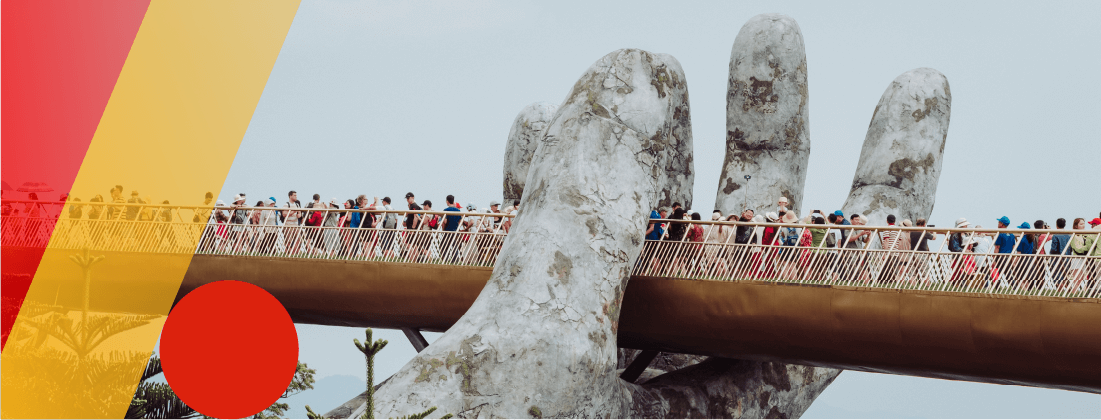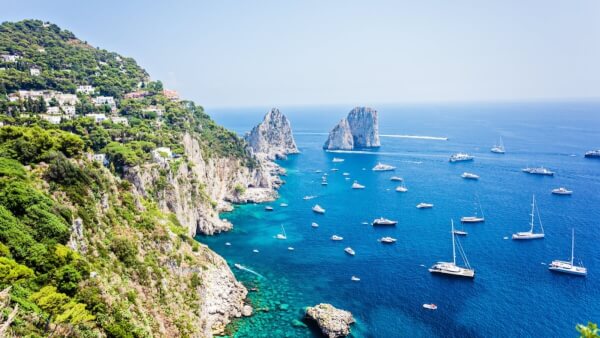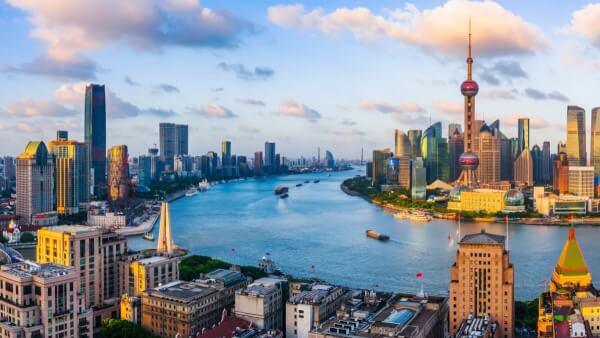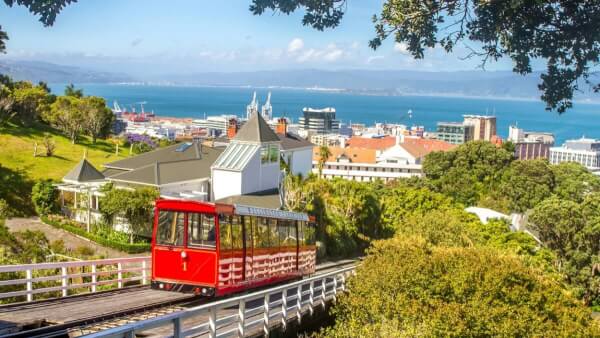Travelling to the Philippines from Australia. The Lowdown
Travelling from Australia to the Philippines? Let’s fill you in on the travel requirements, touristy and non-touristy spots and other need to knows in our guide

With over 3,000km of coastline, historic cities, delicious cuisine, and a relatively cheap cost of living, Vietnam is a fantastic travel destination. Relax on an island paradise, visit historic temples and houses, and eat your fill of authentic local and regional food - whether you’re looking for cheap and cheerful backpacking or top end luxury, you’ll find it.
This guide will take a look at some of the essentials including visas, internal travel, accommodation and the top sights to consider. To make sure your money goes further, we’ll also touch on how best to pay for your trip, using a Wise borderless account and linked Mastercard.
There’s such a range of travel options and destinations in Vietnam that every trip will be unique. That means that the only way to really get the most from your visit is to invest some time in advance, researching options, costs and ideas.
What you need to know depends on your plans. If you’re looking forward to feasting on street foods, check advice on food hygiene and sensible precautions. If you’re buying a motorbike and riding the Ha Giang loop, get the right license, insurance and advice before you head off¹. And if you want to see Vietnam at its best, make sure you check out the likely weather at your destination before you book.
Get advice and ideas on the official Vietnam tourist website to help you plan your trip².
You’ll also find advice on safety, visas and more, on the Vietnam Smart Traveller page. Smart Traveller is provided by the Australian government to help travellers before, during and after trips overseas - making it a good starting point, no matter where you’re headed³.
Vietnam is a relatively cheap destination. However, you can still get caught out by fees and charges, and end up over budget.
Don’t pay more than you have to while you travel. Use these tips to cut your costs
Getting used to a new currency is often confusing. And it can be even harder if you’re not familiar with the exchange rates applied. The one to watch is the mid-market exchange rate - the rate banks use when buying currency themselves.
You can keep an eye on the mid-market rate with an online currency converter or app. This is a good benchmark to use when checking the rates you’re given for exchanging your dollars to Vietnamese dong. You’ll often find there is a markup added to this rate. That’s an extra fee, and can be avoided by using a currency specialist which offers mid-market exchange. We’ll look at one smart option a little later - the Wise borderless account and card - which could help you spend less on fees, and more on yourself.
Most travellers will choose to cover their costs with a mixture of cash and card payments. However, these may come with extra fees. Check the small print for your account and card before you travel, to see if you’ll be charged to spend or make cash withdrawals overseas. You might spot flat fees, percentage charges - or both - and these costs can quickly mount up.
A specialist account and card can help. More on that in a moment.
DCC is a headache for travellers using a credit or debit card abroad. This is where you’re given the option of paying in either your home currency or the local one when travelling. Paying in dollars sounds convenient - but can come at a high cost.
Pay in the local currency - in this case, dong - to get the best exchange rate and lowest fees.
A specialist account can help you manage your money as you travel, and cut the fees you pay.
Get a Wise borderless account to hold, send and spend dozens of different currencies. All currency conversion is done using the mid-market exchange rate for just a low, transparent charge. You’ll also get a Wise borderless Mastercard, to spend as you travel and avoid foreign transaction fees. See if you can save on your trip to Vietnam, with Wise.
Australian government advice is to exercise normal precautions when travelling to Vietnam. Most visits are problem free, but it always pays to be mindful of potential hazards.
One of the main issues is road traffic accidents - travel by motorbike is the norm in many areas, and road safety is poor due to conditions, other drivers and relatively high levels of drink driving. Petty crime is also a problem in some crowded areas and cities - look after your belongings as you would any other major urban centre.
It’s important to know that the health infrastructure in Vietnam is not as developed as in Australia - particularly outside of major cities. Have adequate insurance, as a serious injury will mean you need to be medically evacuated to find treatment.
The Australian consular service may be able to offer support if you find yourself in trouble when overseas. Check out the information, fact sheets and contact information available on the Smart Traveller website, to find out more about what they can - and can’t - do⁴.
You’ll need a visa to enter Vietnam. The exact visa that is right for you depends on how long you’ll stay, and what you intend to do when you’re in the country. There’s more information on the Vietnamese immigration department website⁵ - or you can seek advice from the Vietnamese embassy here in Australia⁶. Shorter trips may be covered by a visa on arrival - others will require you to apply well in advance of travel.
It’s worth noting that there are many visa agents online and upon arrival in Vietnam. While many of these are legitimate services which may help you arrange or extend your visa for a fee, some of them are scams which will leave you out of pocket. Look for official sources only, and read all the small print so you know what you’re paying for, if you choose an agent.
Vietnam’s cities and tourist areas have a good range of accommodation options available for travellers. If you’re off the beaten path, you may find fewer choices - and the quality will vary widely.
Backpackers can find hostels and dormitories in all major cities, and tourist resorts on the coast and islands will have cheaper options, as well as high end luxury resorts - and everything in between. You might be able to show up at a hotel and arrange a room for the night - but don’t try this at peak times, such as the Tet lunar new year, when everything is booked months in advance.
The Rough Guide suggests budgeting $30-$75/night for a mid-range hotel (priced in USD), with cheaper options easily found in hostels and homestays⁷. It’s good to know some homestay options in the countryside will involve sleeping in a communal room, on a bamboo mat on the floor. You’ll get a wonderful welcome and fabulous food - but it can be rather hard on your back if you’re not used to it.
Travel within the cities is simple using taxis, and Grab - South East Asia’s answer to Uber.
However, Vietnam is a very large country, and most travellers staying for any length of time will want to move about to take in a variety of spots. This can be done independently or with a tour group - but independent travel will require a little advance planning.
One common option is to buy a motorbike when you arrive in Vietnam and then ride some or all of the coast line, or one of the other scenic routes available. However, road safety is poor, and you’ll need a Vietnamese license for all but the smallest of bikes. Make sure you understand and can handle the conditions before you set off.
There are also cheap internal flights, long distance bus connections, and trains which will get you about with relative ease. Book tickets online or through one of the many travel agents available in cities and resorts.
More information, inspiration and advice available on the Vietnam tourism website⁸.
You’re spoiled for choice in Vietnam. Whether its history, nature or culture, it’s all here. Do your own research to find the perfect route for your trip - here are a few hints which might help.
Here are a few more considerations before you go.
Vietnam is high up on the bucket list for many travellers, and for good reason. There’s plenty to do, and your dollar could go a long way. Make the most of your time and money, by using a Wise borderless account and linked Mastercard for spending while you travel. You’ll avoid excessive fees and have more to spend on doing the things you love.
Sources:
All sources accurate as of Jan 14 2020
*Please see terms of use and product availability for your region or visit Wise fees and pricing for the most up to date pricing and fee information.
This publication is provided for general information purposes and does not constitute legal, tax or other professional advice from Wise Payments Limited or its subsidiaries and its affiliates, and it is not intended as a substitute for obtaining advice from a financial advisor or any other professional.
We make no representations, warranties or guarantees, whether expressed or implied, that the content in the publication is accurate, complete or up to date.

Travelling from Australia to the Philippines? Let’s fill you in on the travel requirements, touristy and non-touristy spots and other need to knows in our guide

Want to import your boat from the US to Australia? In this quick guide, we’ll share the costs, timeframes and other need to knows

Want to import your boat from China to Australia? In this quick guide, we’ll share the costs, timeframes and other need to knows

Travelling from Australia to New Zealand? Let’s fill you in on the travel requirements, touristy and non-touristy spots and other need to knows in our guide

Explore our guide on the Commbank credit card travel insurance, detailing coverage, benefits, elligibility and essential tips for your next trip.

Both DragonPass and Priority Pass offer access to airport lounges worldwide. In this guide, we go over key differences that might make one a better fit for you.